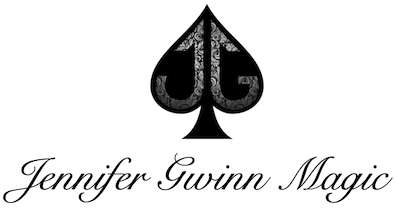In the September 12, 1964 issue of Abracadabra — volume 38 issue 972 — (and later in A Card Session With Peter Kane), there is a routine by Peter Kane called Tetradism. The word tetradistic is based off the name of this routine. In this routine, Peter Kane describes setting up a stack with four repeating thirteen card banks of identical value order, such that when you perform two perfect faros, you end up with a stack of all four of a kinds. Peter also said decks such as Si Stebbins and 8 Kings already have this sort of arrangement.
Tetradism is a word Peter Kane made up — which I think is a very clever name to describe this routine of his. Let’s break this word up into two parts: tetrad-ism. The word tetra means four in Greek and the word tetrad means a “group of four” — much like tri means three and a triad is a “group of three”. The suffix “ism” means an act, practice, system, process, etc.. So Tetradism is system or act related to a group of four. This made up word Tetradism is in the context of playing cards, so I figure Tetradism is a system related to a group of four repeating banks of cards with identical card value order, such when acted upon with two faro shuffles, it brings all thirteen four of a kinds together, forming a deck entirely comprised of four of a kinds, as occurred in Peter Kane’s routine with this name.
We need an adjective to describe this sort of stack used in the routine Tetradism. There is already a word in the dictionary which is an adjective to describe something characterized by a group of four, and that word is tetradic; it’s not a common word but it is in the dictionary nonetheless. So this word could very well be used to describe this sort of stack. I’ve heard Dan Harlan suggests this is the right word for this sort of stack.
The Greek suffix “ic” is used to turn a noun into an adjective which means “characterized by” the preceding element.1 So tetrad-ic means “characterized by a group of four”.
However, instead the word tetradistic has become the widely accepted term in card magic to describe this sort of deck arrangement. The word tetradistic isn’t in the dictionary, but neither is the word Tetradism, which is what the word tetradistic is derived from. They are even spelled exactly the same except the “m” was taken off the end of Tetradism and the “tic” was added to make the adjective tetradistic — much like Buddhism vs. buddhistic.
For the suffix “istic”, the “ic” part usually follows an existing word which ends with “ist”. So for tetradistic to be a word, this means there should be a word “Tetradist” which already exists — which, in this case, would be a made up word as well. Since Peter Kane’s Tetradism is a made up word, and to make sense of the word tetradistic, I assume there exists the noun “Tetradist” which would mean: a cardician who makes use of a stack characterized by a group of four repeating banks of card value sequences, such that when acted upon with two perfect faro shuffles it produces a deck of four of a kinds. So making an adjective from the noun Tetradist, we add the “ic” forming the word tetradistic. So a tetradistic stack would be a stack which a Tetradist uses to do card magic.
Allan Ackerman is a devout “Tetradist” who has been using tetradistic stacks as his memdeck ever since the 1960s. He set up his first stack of this sort using the instructions given in S.W. Erdnase’s The Expert At The Card Table. But S.W.E. didn’t have a name to classify this sort of stack, that’s where Peter Kane came in. After reading A Card Session With Peter Kane, Allan Ackerman thought Peter came up with the perfect word to describe this old stack and started popularizing the term tetradistic to describe this sort of stack arrangement.
The following is a footnote verbatim from Magic Mafia Effects, a book which Allan Ackerman wrote in the fall of 1969: “The basic idea of the tetradistic stack can be found in Peter Kane’s book, A Card Session with Peter Kane.” So this word has been used over 55 years in card magic to describe this sort of stack.
Allan said it is a possibility that he morphed the word Tetradism into tetradistic, but does not think he did; he believes Peter Kane came up with the word.
A thought of mine. I wonder if Peter Kane humorously thought of Tetradism with some spiritual connotation? After all he created a tetradistic routine called “The Son of Tetradism”. What did he mean by that? Did he also have plans to make routines called “The Father of Tetradism” and the “Spirit of Tetradism”? I am not sure, LOL. There is an old unpopular belief of a Christian godhead of four called tetratheism vs the common Christian trinity. Four in one; four individual gods but also one. When you think about it, after two faros, the four gods of each respective bank becomes a gigantic singular god where all the four gods are unified into one, forming a deck of four of a kinds — with the same value sequence as the individual banks.
Note: When Allan Ackerman refers to a tetradistic stack, he does pay mind to the suit order, unlike Peter Kane in Tetradism. He’s always set up his tetradistic stacks in a parallel manner, such that a color mate for every card is 26 cards away. This is very useful in card magic for color matching routines among other routines and it also aids in memorization of a tetradistic stack.
